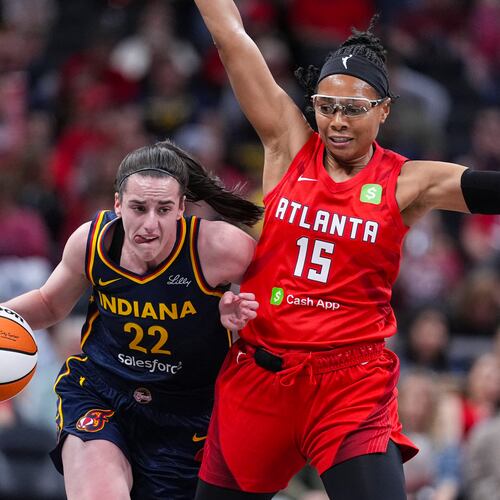Syracuse center Macky MacPherson got his introduction to his new conference home last month at the ACC Football Kickoff in Greensboro, N.C.
“I got called ‘Sweetie’ the other day,” MacPherson said. “That’s new to me.”
The ACC perhaps got its introduction to Syracuse in the Orange’s 38-14 win over West Virginia in the Pinstripe Bowl. Syracuse gashed the Mountaineers for 395 rushing yards on a staggering 65 carries. At times, the Orange ran the same play multiple times in a row.
“They knew it was coming — they called it out,” MacPherson said. “They just couldn’t stop it.”
Syracuse and Pittsburgh will import their bruising style to a conference that has a heavy taste for spread offenses and plenty of passing. As the grandson of former Syracuse coach Dick MacPherson noted, the two schools also will bring to the conference a different section of the East Coast. Ultimately, perhaps that aspect of the ACC’s most recent expansion, along with the addition of Notre Dame for every sport but football and Louisville in 2014, will impact the conference most significantly.
“Geographically, we’re moving forward as a true Atlantic Coast conference, with memberships extending the entire length of the Eastern seaboard and into the Midwest,” ACC commissioner John Swofford said at the ACC media-days event.
ACC officials are happy to point out that the league’s footprint now has the most TV households (38 million) and the highest population (107 million) of any conference in the country. By 2030 Swofford said, 55 percent of the U.S. population will live within the footprint.
Those numbers bode well for the possibility of an ACC cable network, which the conference began investigating in earnest earlier this year. Swofford said he expected it to be a three-year process, with the conference only six months in. The Big Ten and Pac-12 have their own networks, ventures that rake in revenue by the millions, and the SEC’s is scheduled to launch in August 2014.
“We’re very interested in looking at it,” Swofford said. “If it turns out it’s a viable business deal for us and ESPN, and we think it gives us the best potential in terms of revenue streams and exposure, then that’s the route we’ll go.”
Football-wise, the teams ought to be able to compete. Pitt returns 14 starters for coach Paul Chryst, in his second season after serving as an assistant the previous seven years at run-heavy Wisconsin. The Panthers were 6-7 last season, perhaps most notably narrowing missing an upset of Notre Dame in South Bend, Ind. They also trounced Virginia Tech earlier in the season. Their top player is defensive tackle Aaron Donald, who led the Big East in tackles for loss with 18.5 last season.
Syracuse has 11 starters back and a new coach in Scott Shafer, previously the Orange’s defensive coordinator. He replaced Doug Marrone, who replaced former Georgia Tech coach Chan Gailey as coach of the Buffalo Bills. The school of Jim Brown and Donovan McNabb finished 8-5 last season, winning six of its final seven games. Pitt was picked to finish fifth in the Coastal Division and Syracuse projected sixth in the Atlantic.
Both teams will visit Tech this season, Syracuse on Oct. 19 and Pitt on Nov. 2. The interdivision visit by Syracuse highlights one of the biggest impacts of the expansion for fans. Instead of playing three crossover games — one against the primary partner and two against a rotating set of opponents — teams will play only two such games, one against the primary partner and one rotating opponent.
As a result, aside from the primary partner (Tech’s will remain Clemson), teams will play each team in the opposite division only twice over a 12-year cycle. Previously, it was two games over a five-year span.
The league added a ninth conference game to accommodate the expansion, but returned to eight with the addition of Notre Dame. While remaining independent for football, the Fighting Irish will play five games annually against ACC teams. The prospect of nine league games plus Notre Dame every three years or so and then, for Tech, Florida State and Clemson, another game against an in-state SEC rival was a bit too daunting.
“You don’t see each other quite as often as you would if you were a small league,” Swofford said. “But for us, the benefits far outweigh that particular fact.”
About the Author
Keep Reading
The Latest
Featured


